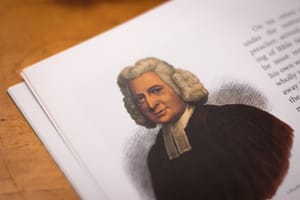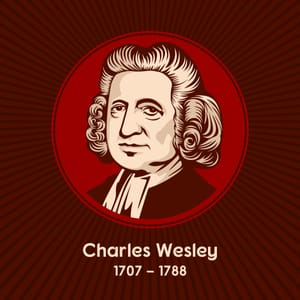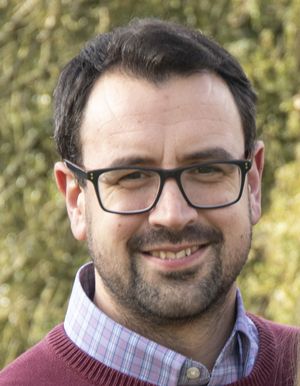Just over a yearago, the hamlets of Kepwick, Thimbleby and Hawnby in the Hambleton hills near Thirsk were hit by flash floods. It was only ten months after a dramatic flash flood devastated the Cornish village of Boscastle. The Yorkshire floods made headline news, but were soon forgotten — there had been considerably less damage than at Boscastle.
About 140 years ago these same villages, and many other small communities in the dales and wolds of North and East Yorkshire, were impacted by very different sorts of flash floods — by powerful, localised outpourings of the Spirit of God.
Isaac C. Watson gives an important though tantalisingly brief account of some of these awakenings. His narrative centres on one of the revival’s main instruments and is entitled The life story of Thomas Langton — the Yorkshire evangelist. Watson, a Methodist minister, knew Langton well and has rendered an incalculable service to posterity in recording details of this remarkable ministry.
The slim volume was published in 1895 by Joyful News Book Depot, a literature enterprise within Wesleyan Methodism begun by Thomas Champness. A zealous Methodist minister and former missionary to West Africa, Champness went on to be a founding father of Cliff College in Derbyshire — a place for training Methodist lay workers and preachers in evangelism.
Redemption in Christ
Thomas Langton was born in May 1836 at the village inn in Great Ouseburn, four miles from Boroughbridge. His family were Anglican but unconverted. When 12 years old he was apprenticed to a local tailor — a Congregationalist who loved a good sermon. Every Sunday Mr Anderson asked the young men at his dinner table for an outline of the sermon preached that day. Under this regime Thomas learned much.
After nine years, Langton went to work for a man called Thomas Seymour (or ‘Hallelujah Tommy’). Family prayer took place in the Seymour’s household at least three times a day. Contact with this Christ-like family completed the work in Langton’s soul — at a prayer meeting in their kitchen only ten days later, he found redemption in Christ.
About this time, his father lost his business and went to live at Kepwick. Thomas went to live with him and set up in business as a tailor and livery maker. He also preached in local Methodist chapels — a practice frowned on by his father.
The demand for his powerful evangelistic ministry grew to such an extent that he began to consider full-time service as a preacher. But the needs of his elderly parents weighed upon his mind.
Delighting in the Lord
After months of indecision he prayed, ‘Father, I am bothered about this matter. I am fearful of acting unwisely and bringing discredit on thy cause if I give up the business and my parents should come to want’.
As he prayed, he felt an overwhelming sense of the Lord’s presence and the words of Psalm 37:3-4 confirming his call to preach: ‘Trust in the Lord and do good, so shalt thou dwell in the land, and verily thou shalt be fed. Delight thyself also in the Lord; and he shall give thee the desires of thine heart’.
Soon after this, while walking home from Hawnby to Kepwick, Satan whispered to him, ‘Now then, you have been preaching and praying for eight weeks on end and you’ve no money to take to your poor old father and mother. How about your 37th Psalm now?’ Langton resisted this doubt immediately, continuing his journey.
The shadow of the Almighty
Passing a farm where 14 out of 17 children in the farmer’s large family had recently been converted under his preaching, he called to say goodbye. The farmer welcomed him with, ‘Thomas, how are you going to live and find the necessities of life for your mother and father?’
‘I’m sure I can’t tell you how, Mr Moore, but God provides for all our needs, out of his abundance by Christ Jesus, and he will provide’.
‘That’s all well and good’, he replied, ‘but I should like to have something more definite than that. However, here is a sovereign, and my wife has another for you’.
‘Thank you, sir, I accept it gratefully as from the Lord’.
Continuing through Cowsby he called to see another man, whose wife had been converted through his preaching. Surprisingly this man asked him the same question as the farmer, ending with the remark, ‘Here is a sovereign, and Mrs Attaly has another for you, she says. We were talking about you in bed last night, wondering when we should see you’.
‘There, now, Satan’, Thomas called out aloud when he resumed his walk, ‘this is where my 37th psalm is — under the shadow of the Almighty’.
When he arrived home, he found that another man who knew his family well had sent them five stones of flour and a promise of further support. Others had sent needed clothing. Such had already been the impact of his ministry and such was the way the Lord provided.
Desolate region
What sort of a man was Thomas Langton? For his day he was big — nearly six feet in height and over 18 stone in weight. He was physically fit and possessed a powerful voice. He had only a basic education, but was astute and intelligent.
He was diligent in the study of the Word of God and enjoyed childlike communion with God. He was a good judge of character and a very good listener. In short, he was a simple but highly effective evangelistic worker.
One (but by no means the only) amazing incident from his ministry took place in East Moor, a desolate region near the North Yorkshire moors. It was a wild and lonely place, with no chapel. Farmhouse kitchens had to be used for the meetings.
However, souls were saved every night and news of Langton’s preaching quickly spread to the neighbouring areas of Bilsdale, Farndale and Bransdale. People began to walk six or eight miles to get to the services.
One night, three men turned up, ready to play the fool and disrupt the proceedings, but it was not long before they also came under conviction of sin. They knelt at the penitent form, along with four women also seeking pardon.
Something unusual
At this point in the meeting, the seven seekers suddenly stopped praying aloud and gradually all other praying and singing stopped in the room. Everyone except the seven looked up to see what the matter was, feeling that something unusual was taking place. For twenty minutes silence reigned, and the penitents seemed soundly asleep.
On awakening from this apparent sleep, the seven sprang to their feet with a look of profound joy and all gave the same account — they had seen a vision of heaven and heard music that neither tongue nor pen could describe; a sense of pardon had been given to them all.
This manifestation created great joy (and fear) in the local population. Before the services were concluded, only 12 people in the East Moor district remained unconverted — and they didn’t dare come near the meetings!
For another 16 years Thomas Langton’s labours continued unabated. He held at least one service every day throughout that period, and often up to five a day. These were in country chapels, farmhouses, cottages and schools, often crowded and hot, and they lasted into the late evening. Very many were converted to Christ.
The saving work of Christ
But by 1877 Langton’s health had broken down. He was totally exhausted and unable to do any effective work for two years. His weight fell from eighteen to eleven stone. During his illness he was looked after by other believers and gradually recovered his strength.
In May 1880, he married Mary Allman of Lissett. The couple moved to Malton and from here Thomas began to itinerate once more. In Malton, Langton found a close friend in Dr Young, the local doctor and an ardent Methodist. Dr Young’s son would become the well-known evangelical minister of Central Hall, London — Dinsdale T. Young (1861-1938). Dinsdale accompanied Langton for a while, helping him and no doubt learning precious lessons for future ministry.
Little is known of the last part of Thomas Langton’s life. His gravestone is in Cotherstone, close to Barnard Castle. It records that he died in August 1908, while Mary lived on until she was 90 years old, dying at the relatively recent date of December 1954.
The limited information we have on Thomas Langton reminds us that we only know those episodes of the saving work of our Lord Jesus Christ that someone actually records — the greater number of Christ’s saving acts are buried in history. However, the day of resurrection will yet come; and then the glorious tale will be fully told!



















